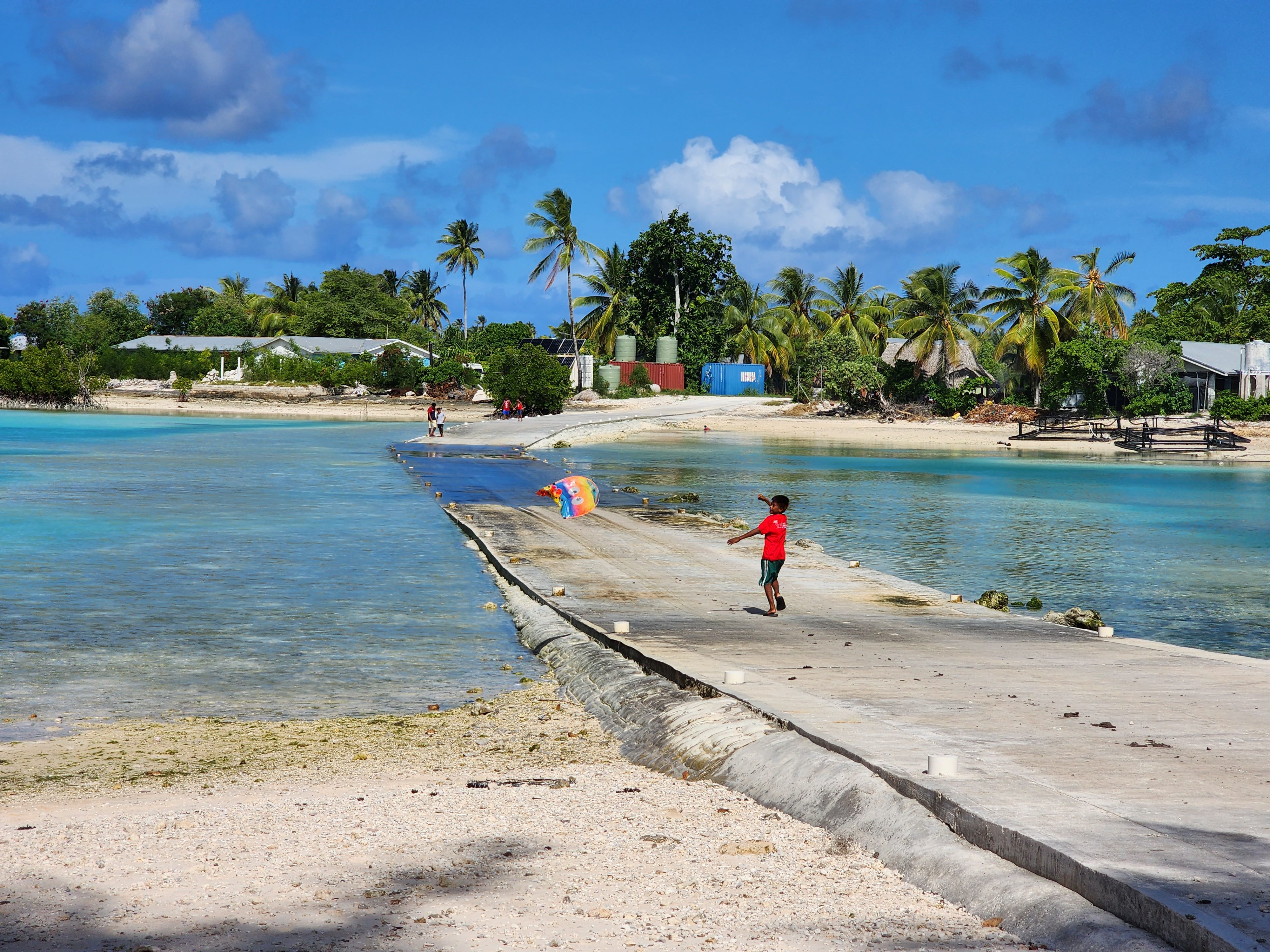How do you flee climate change?

How do you flee climate change?
How do you flee something that is everywhere?
Refugees, displaced people and their host communities are living on the frontlines of a changing world.
60 percent of the world’s refugees and people displaced by conflict come from or are living in the most climate-vulnerable countries in the world. Those least responsible for global warming are being hit the hardest.
How much do you know about the effects of climate change on refugees and displaced people?
Text and media 19
UNHCR, the UN Refugee Agency, is on the ground with these communities, as we always have been.
We are working towards a world where fewer people are forced to flee, and are empowering affected communities to better prepare, adapt, and build resilience to current and future climate shocks.
"My experience as a refugee has made me look at climate change in a very different way. Having lived in a region both susceptible to conflict and climate related disasters, I have come to understand that these issues are actually interconnected and exacerbate vulnerabilities."
Introducing eight young people taking action to help their communities adapt and prepare for our changing climate.
Text and media 43
Mohammed Anower, 18, is a Rohingya refugee from Myanmar living in Kutupalong refugee camp in Bangladesh. Despite his young age, he has already been an active member of the youth environmental group in his section of the camp for several years. His group focuses on stream restoration and tree planting.
Text and media 44
Najeeba Wazefadost is a refugee from Afghanistan, now living in Sydney, Australia. She is the founder and CEO of APNOR – the Asia Pacific Network of Refugees. Her organization has increasingly dedicated its efforts to address pressing climate challenges affecting refugees in the Asia Pacific region.
Text and media 43 - Copy
Ermano Prévoir is a displaced Haitian agronomist and environmental activist living in Belém, Brazil. He began his journey as an environmental champion in Haiti, organizing events to raise awareness about environmental degradation and deforestation. As a doctoral student in agronomy at the Federal Rural University of Amazonia, he is focusing on sustainable farming techniques.
Text and media 44 - Copy
Deline Ramiro Yihumutima, 24, is a refugee from Rwanda living in Kakuma refugee camp in Kenya. She is a passionate advocate for clean, affordable energy and for the use of digital technology to empower refugees. She works for the Solidarity Initiative for Refugees, a refugee-led organization that uses solar energy to power a digital hub and educates children about how to take care of the environment and plant trees.
Text and media 54
Barthelemy (Barth) Mwanza Ngane is a refugee from the Democratic Republic of Congo. His climate activism began in Tonogara refugee camp in Zimbabwe, but he recently resettled to Ohio in the United States. He is a coordinator with the Global Refugee Youth Network which provides seed funding to refugee youth-led organizations that have developed initiatives to respond to climate change and other issues affecting their communities.
Text and media 55
Opira Bosco Okot is a South Sudanese refugee who uses his passion for filmmaking and public speaking to advocate on behalf of the climate and other issues. He recently completed an economics degree at Ndeje University in Kampala, Uganda, and is currently working as an intern at UNHCR’s headquarters in Geneva.
Text and media 56
Eman Al-Hamali is an internally displaced person living in Abs District in Yemen’s northwest Hajjah governorate. She leads a group of 10 women who run a solar microgrid plant. It provides affordable energy to 50 households and was the inspiration behind 12 other solar plants that benefit more than 44,000 people in four governorates impacted by conflict and climate change.
Text and media 57
Jeanne Muhimundu, 21, is a Rwandan refugee living in Tongogara refugee camp, Zimbabwe. As assistant project manager of the Refugee Coalition for Climate Action, she leads awareness sessions on climate and environmental action with young refugees in the camp and conducts tree planting and clean-up campaigns.
Join us and take action today
Escalating displacement and suffering are not inevitable. The worst-case scenarios can be avoided by scaling-up and directing climate action to reach those in greatest need. You can make a difference.















